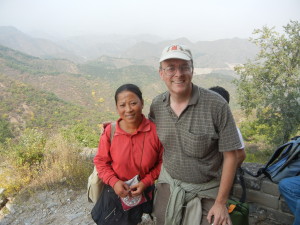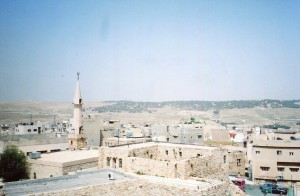
{ Comments on this entry are closed }

{ Comments on this entry are closed }
I found the Middle East a dangerous place to travel in. The people are so warm, and the cultures so ancient, rich and diverse, that it’s an easy region to fall in love with. But it can also cause you heartache because many of the corrupt governments, feeding off their land’s natural resources, hoard the wealth. They do little to improve schools and infrastructures, and they keep most of their people poor.  I was there in 2007, a bit before the Arab Spring’s hopes for change, and the subsequent difficulties that new governments have had cohering. Instead, old political status quo’s have often asserted themselves more violently than ever. While I was in my hotel lobby in Amman, Jordan, a video played on the TV with a plea for peace. Understanding it can help heal this region and bring it back to its better nature. [click to continue…]
I was there in 2007, a bit before the Arab Spring’s hopes for change, and the subsequent difficulties that new governments have had cohering. Instead, old political status quo’s have often asserted themselves more violently than ever. While I was in my hotel lobby in Amman, Jordan, a video played on the TV with a plea for peace. Understanding it can help heal this region and bring it back to its better nature. [click to continue…]
{ Comments on this entry are closed }
The play’s the thing. Hamlet said this as he concluded that the way in which his uncle would watch a play would show whether or not he was guilty of killing Hamlet’s father. In Shakespeare’s time, the word thing meant a subject for discussion in a public assembly. Its original meaning in English was a judicial or legislative assembly (Iceland’s parliament is still known as the Althing). After Shakespeare’s time, the word thing was generalized into any object. The single object has been such a strong center of gravity in Western thought and perceptions that it’s often taken for granted as basic reality, and other ideas easily get pulled into it like orbiting satellites.
But in Laos and many other Southeast Asian cultures, the thing’s the play. Come and explore a different way of thinking about the world. [click to continue…]
{ Comments on this entry are closed }
Wat That Luang, in Vientiane, has a lot of enchantments besides its impressive outer form.
Most visitors miss the its historical depths and the many beautiful art works around it. We’ll explore them here. [click to continue…]
{ Comments on this entry are closed }
Many Laotians consider Vientiane’s That Luang to be their national monument.
But the Insight guide that the Discovery Channel published called it strange and exotic. We’ll take a closer look at it and delve into its mysteries. [click to continue…]
{ Comments on this entry are closed }
The kings of Laos’ Lan Xang Empire unified their realm by importing Indian traditions, like Buddhist monasteries and court dances that dramatized the Ramayana. But Laos quickly added its own cultural wealth to these currents and created a landscape that was (and is) both vibrant and beautiful.
The public assembly hall of Wat Mai (above) was finished in 1788 or 1794, and it housed the Phra Bang Buddha statue from 1894 to 1947–the most honored religious image in Laos, which protects the country. The royal palace (the national museum since the 1975 Marxist takeover which ruthlessly deposed the king) presides next to Wat Mai. So key royal and Buddhist rituals were coordinated. The hall’s graceful stack of five roofs is a Lao design, which added soft touches to the grand rituals. But most fans of Laotian and Buddhist art think that Wat Mai’s greatest treasure is the veranda in front of the entrance. [click to continue…]
{ Comments on this entry are closed }
When Laos’ Lan Xang kingdom’s political power peaked in the 16th and 17th centuries, it was one of the main states in mainland Southeast Asia.
Its kings built monasteries and coordinated Buddhist and court rituals. Monks and ornate assembly halls became common symbols for the world’s order.
As in many other Southeast Asian states, stories in the Ramayana became the subjects for elegant dances at court. The children in the above photo attest that this is still a living tradition–and very pleasant to watch.
So when ancient Laos became a large state, its royals used ideas and arts from India to help unify itself. Khmers and states in Thailand, Burma and Indonesia did too. But all these kingdoms added as much inspiration from their own traditions. Every country is a cultural feast, so here we’ll get in step with the Laotian variety. [click to continue…]
{ Comments on this entry are closed }
I had a wonderful time in Laos last year, and I’ve been looking forward to writing a series of posts on the Lan Xang kingdom.
When its political power peaked in the 16th and 17th centuries, it was a fascinating cultural crossroads. It imbibed influences from India (like the Ramayana, being performed above), several Thai states, Yunnan and Sri Lanka. But it was no copycat–it mixed local cultural patterns with them. This lively kingdom fused lots of thought patterns within its beautiful natural landscape–a very under-appreciated society that will reward anyone who studies it. [click to continue…]
{ Comments on this entry are closed }
The Buddha statue is one of the main art forms in Laotian culture. Graceful figures blend with the abundant foliage and with rivers, mountains and temples into a landscape that enchants every visitor.
Laotians developed their own style of Buddha sculpture shortly after they formed their Lan Xang kingdom in the 14th century. Please come inside and see a little magic. [click to continue…]
{ Comments on this entry are closed }
When the great Lao kingdom of Lan Xang was founded in the 14th century, its first king, Fa Ngum, brought the Buddhist faith from the Khmer court at Angkor, where he had grown up.
But this was Laos–things get funky there. Its landscape of diverse valleys and its Tai cultural roots blended with Buddhism in cool ways. [click to continue…]
{ Comments on this entry are closed }